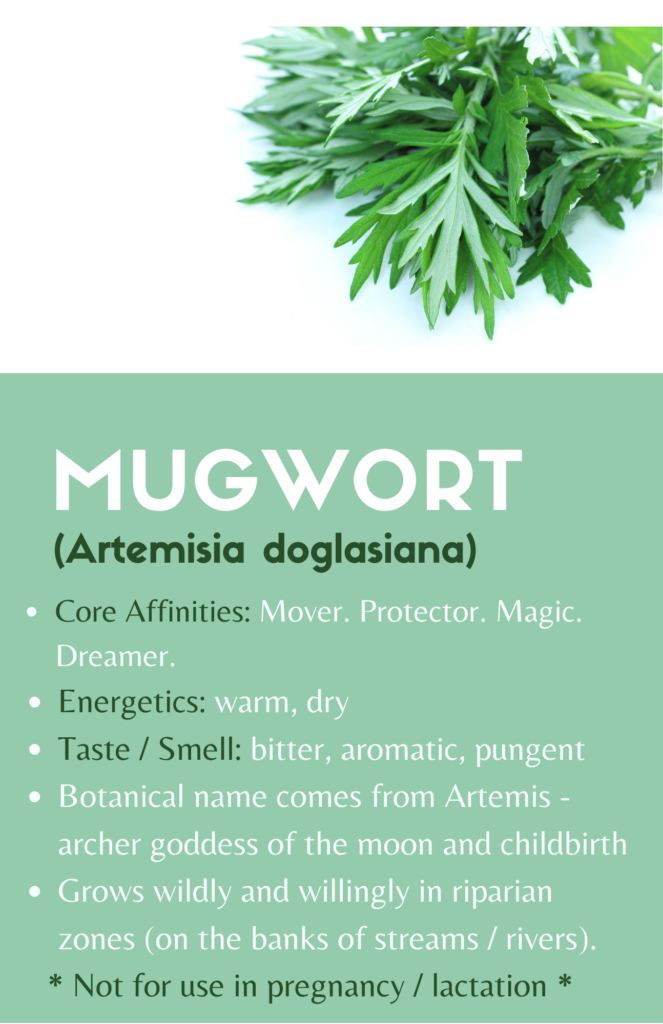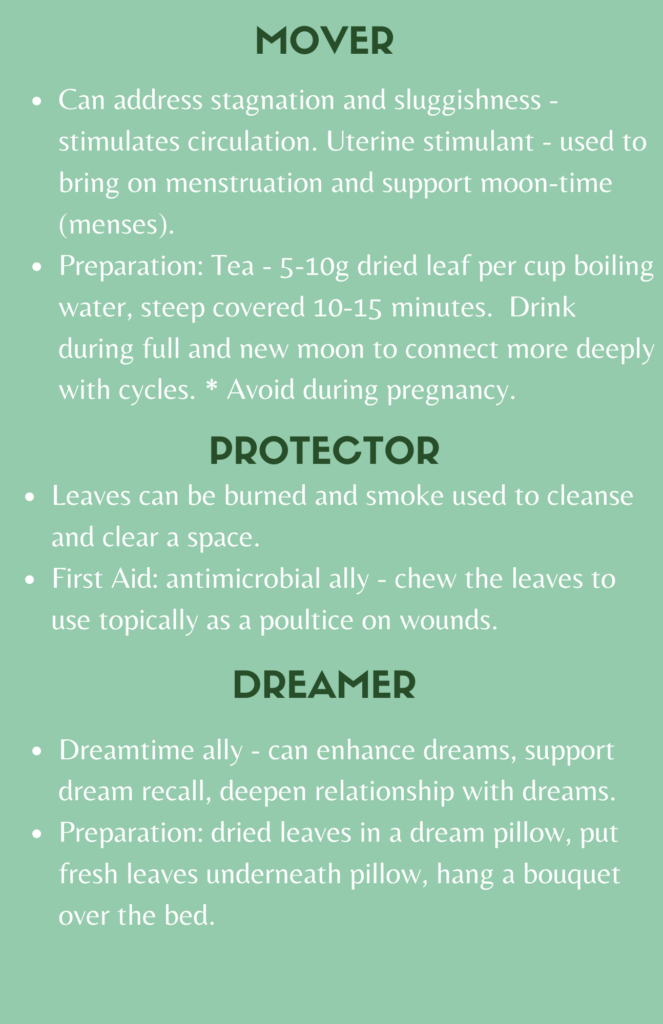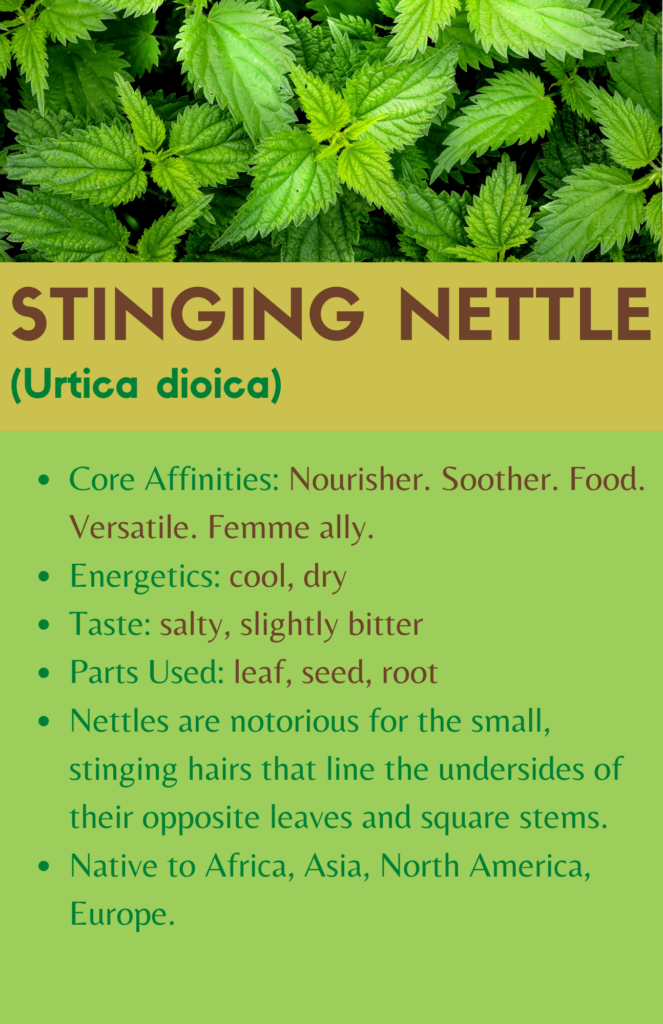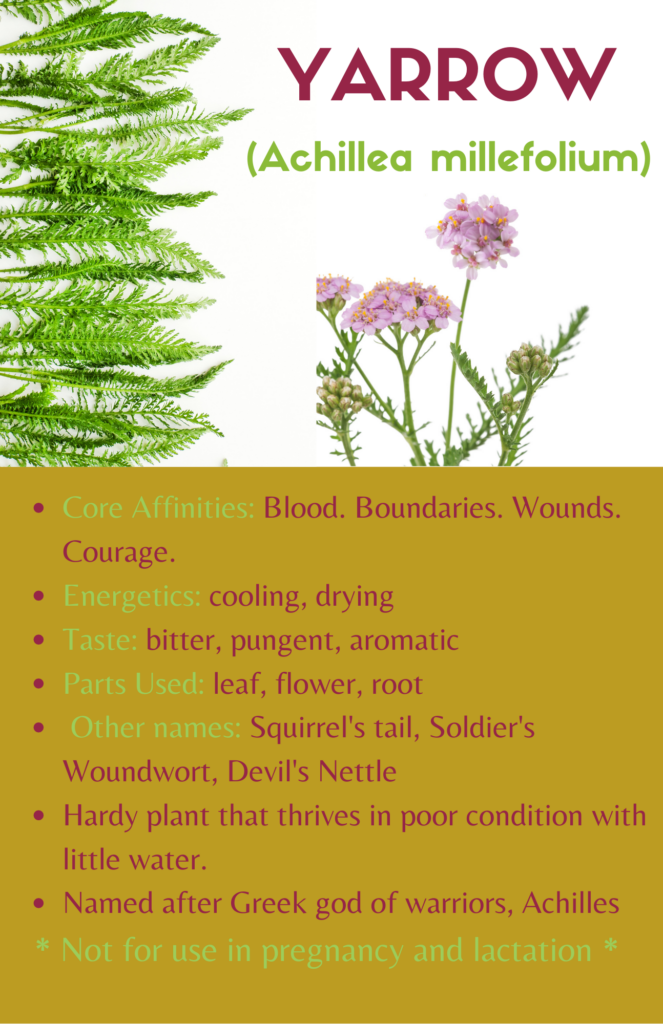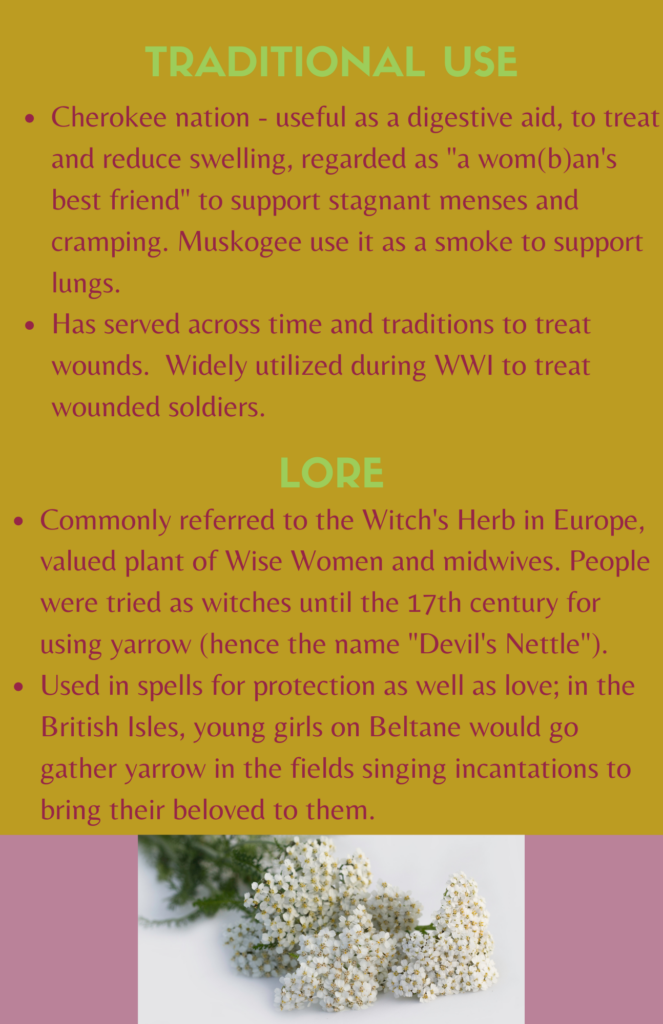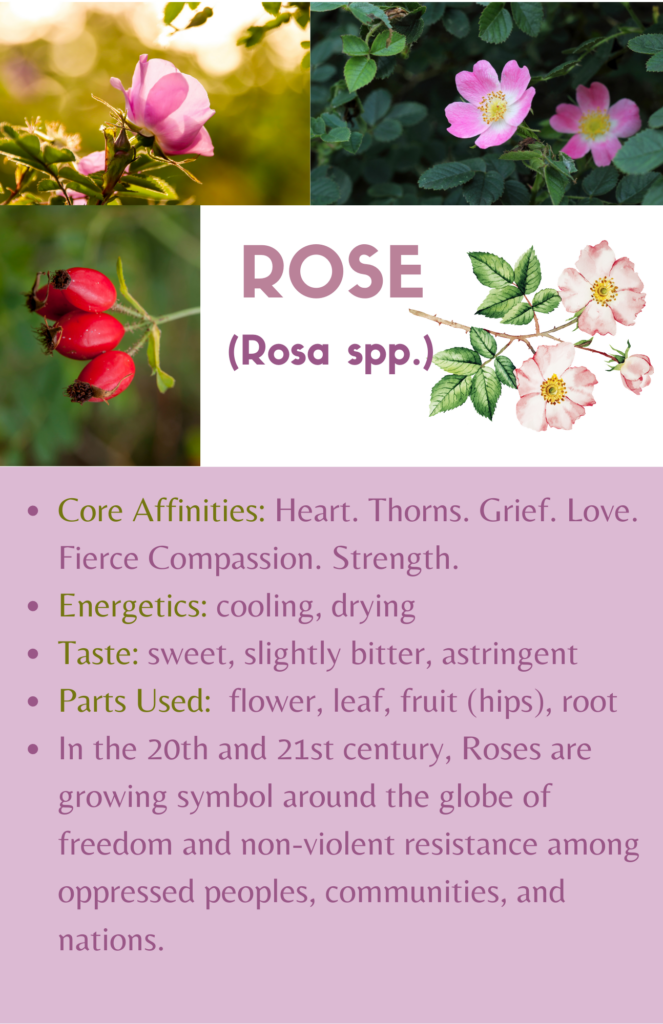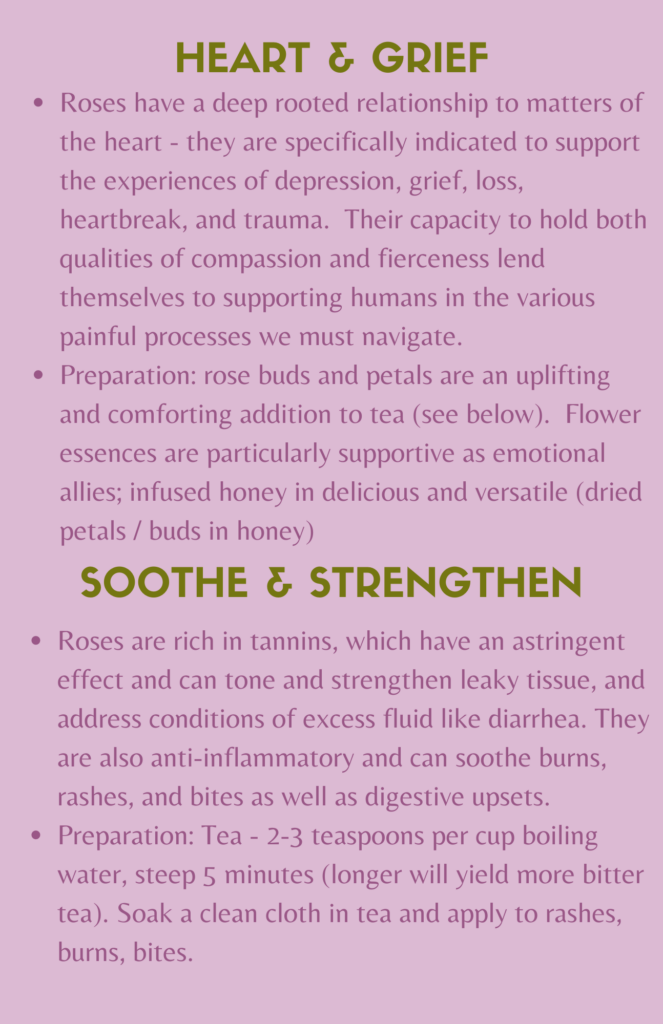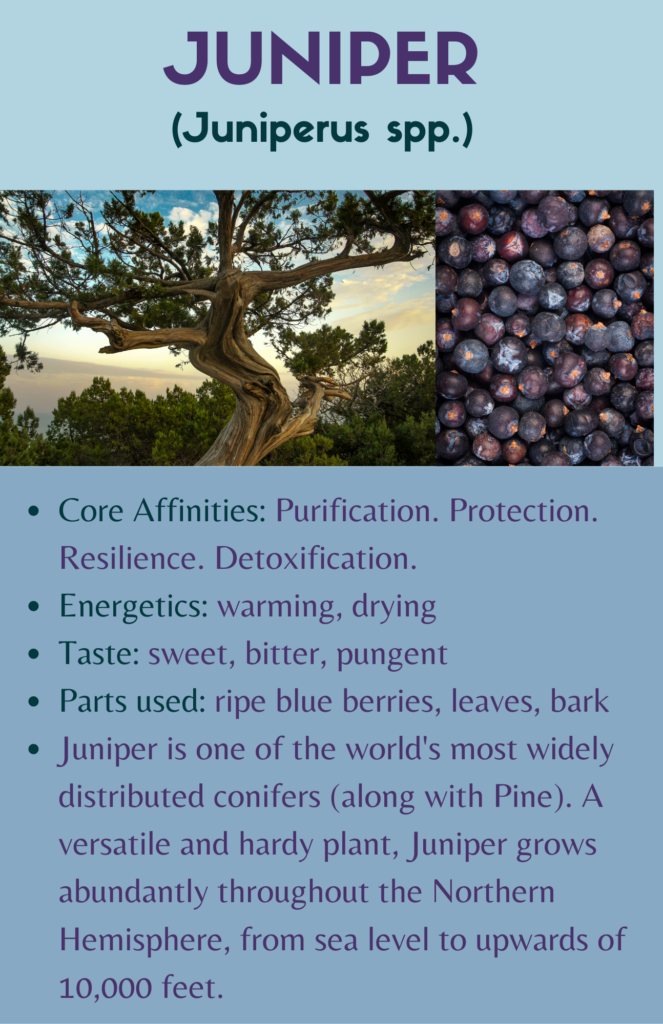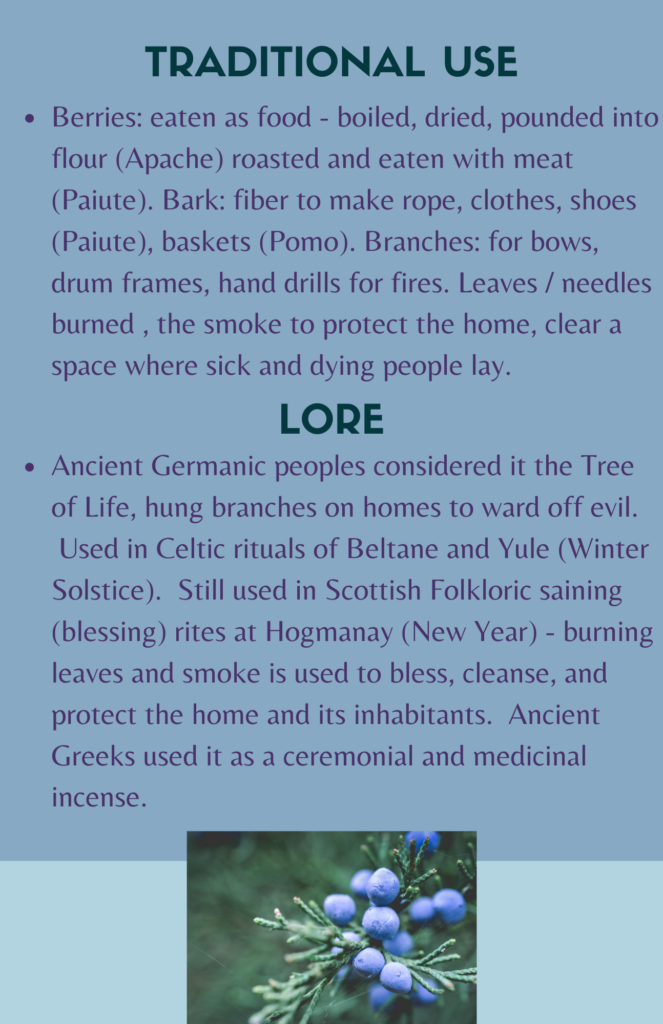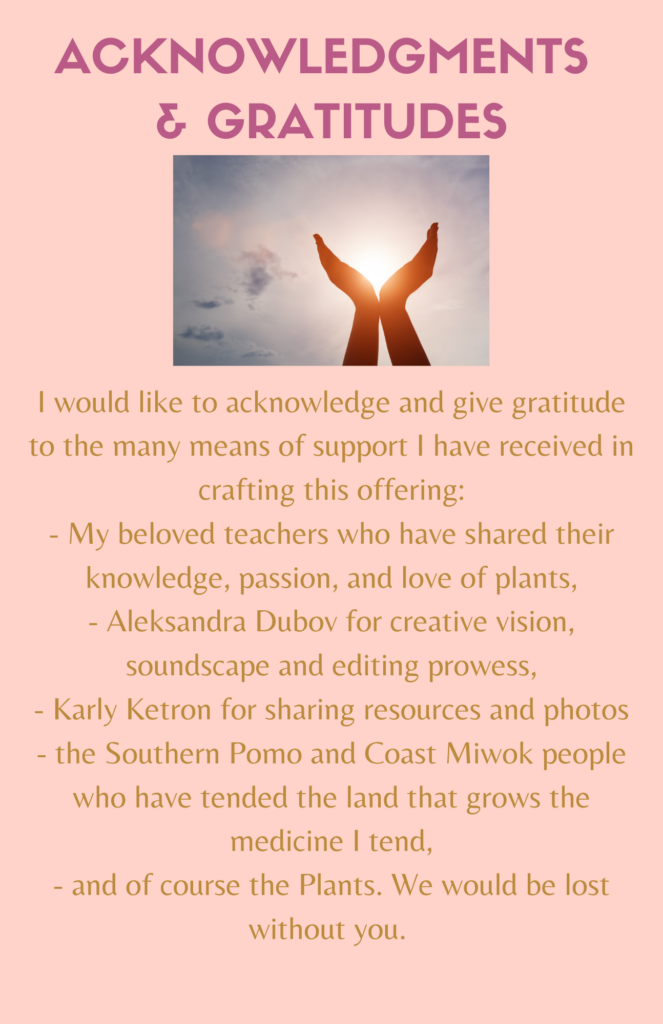Earth Echoes Virtual Gallery
The Earth Echoes Virtual Gallery is an exhibition of local artists whose work speaks to the power of feminism, ecology, and identity and is curated by Cherie Hill, the Artistic Director of IrieDance.
This gallery features two dances choreographed by Cherie, a video by multimedia artist Imani Karpowich, and a dance film performed by artist Andreina Maldonado. Non-video offerings include an exploration and meditation on a dissonance present within Western Herbalism by Rose Rothfeder, and activist inspired sonic text by Lashon Daley.
"During this time of the pandemic when performance venues and cultural institutions are closed, these gallery pieces remind us that caring for the environment and highlighting voices of persons of color and minorities can and must continue," shares Cherie. "These art pieces display rich intersectionality and authentic expression significant to living in harmony and fostering viability for all beings."
//
La Galería Virtual "Earth Echoes" o Ecos de la Tierra es una exposición de artistas locales cuyo trabajo habla del poder del feminismo, la ecología y la identidad, y está comisariada por Cherie Hill, directora artística de IrieDance.
Esta galería presenta dos bailes coreografiados por Cherie, un video de la artista multimedia Imani Karpowich y una película de baile interpretada por la artista Andreina Maldonado. Las ofertas que no son de video incluyen una exploración y meditación sobre una disonancia presente en la Herboristería Occidental por Rose Rothfeder, y un texto sónico inspirado en activistas por Lashon Daley.
"Durante este tiempo de la pandemia, cuando los lugares de actuación y las instituciones culturales están cerrados, estas piezas de la galería nos recuerdan que cuidar el medio ambiente y destacar las voces de las personas de color y las minorías puede y debe continuar", comparte Cherie. "Estas obras de arte muestran una rica interseccionalidad y una expresión auténtica significativa para vivir en armonía y fomentar la viabilidad de todos los seres".
Cherie Hill IrieDance
A CONVERSATION W/ "INTO AFRICA"
In this dance dialogue, I explore soul connection with and physical separation from Africa, my ancestral home. "Why haven't I been?" Through dance and poetry, I dialogue about the restraints, environment, magic, and beauty captured inside the photographs of the "Art/Act: Award - Into Africa, Frans Lanting" exhibit featured at the David Brower Center.
//
SEEDS OF HOPE
Seeds of Hope is a dance film inspired by Wangari Maathai, founder of the Green Belt Movement and the first African woman to win a Nobel Peace Prize. Maathai’s activism brought hope, empowerment, and new governance to thousands of women and Kenyan citizens. Upon hearing about Maathai’s activism, Cherie Hill became moved to create a dance around the story, emotions, and actions of Wangari and the Green Belt Movement women who risked their lives to plant trees throughout Kenya.
//
"Seeds of Hope" ó Semillas de Esperanza, es una película de danza inspirada en Wangari Maathai, fundadora del "Green Belt Movement" o el Movimiento del Cinturón Verde, y la primera mujer Africana en ganar un Premio Nobel de la Paz. El activismo de Maathai trajo esperanza, empoderamiento y un nuevo gobierno a miles de mujeres y ciudadanos de Kenia. Al enterarse del activismo de Maathai, Cherie Hill se conmovió al crear un baile en torno a la historia, las emociones y las acciones de Wangari y las mujeres del Green Belt Movement que arriesgaron sus vidas para plantar árboles en Kenia.
Choreography: Cherie Hill
Performance: Lashon Daley & Cherie Hill
Filming & Editing: Alexa Burrell
Imani Karpowich-Smith
Home.Land
Home.Land is a letter, poem, and prayer. Examining the environment of the Black body, generational knowledge, and trauma, through my own family’s migration story.
//
Hogar.Tierra es una carta, un poema y una oración. Examinando el entorno del cuerpo negro, el conocimiento generacional y el trauma, a través de la historia de migración de mi propia familia.
andreina Maldonado
BlueJay
BlueJay was initially manifested into mind-creation in June 2020 and later recorded in video form. This piece is an exploration of the personification of Psilocybin as an agent of openings and activation. The expanding body grows in all directions and penetrates through different dimensions, existing in two or more places at once. With original music composition and the use of the Venezuelan Cuatro tuned to a 432Hz frequency, BlueJay becomes a ritualistic experience that activates the heart chakra and invites the viewer to go within and feel the ongoing transformation of the self.
//
BlueJay se manifestó inicialmente en Junio de 2020 y luego se grabó en forma de video. La pieza es una exploración de la personificación de la psilocibina como agente de apertura y activación. El cuerpo en expansión crece en todas direcciones y penetra a través de diferentes dimensiones, existiendo en dos o más lugares a la vez. Con una composición musical original, y el uso del Cuatro Venezolano sintonizado en una frecuencia de 432Hz, BlueJay se convierte en una experiencia ritualista que activa el chakra del corazón e invita al espectador a entrar y sentir la transformación continua del ser.
Rose Rothfeder
Plant-cestors
The heart of herbal medicine lives in cultivating relationships with the plants themselves, as the living, sentient, intelligent beings they are. This offering is an introduction to 5 plant allies: mugwort, stinging nettle, yarrow, rose, and juniper. It is an exploration and meditation on a dissonance present within Western Herbalism; the intention to seek and sow healing and repair through the vehicle of plant medicine, while living, growing, and practicing on land harmed by a legacy of colonization and violence. These plants that have called out to be featured here have species native to Turtle Island (North America) and to many other parts of the planet, including Wise Women and European Folk Medicine traditions.
//
Please play this audio accompaniment to the plant-cestors gallery as you meditate on the role and power of these plant allies.
//
Por favor reproduzca este acompañamiento de audio a la galería de Planta-Ncestras mientras medita sobre el papel y el poder de estas plantas aliadas.
Ultimately, as I understand it, the most potent medicine comes with being in relationship to the plants themselves. I cannot emphasize this enough. It is something I have heard again and again from my teachers, and its Truth comes slowly...
It is long, slow, (multi)generational work that we are called to carry forward, knowing that in our lifetime we will likely not see the fruits of the seeds we sow...
Lashon Daley
How to Take Root
"How to Take Root" is a sonic synopsis of Taking Root: The Vision of Wangari Maathai, a documentary co-directed and produced by Lisa Merton. This award-winning film tells the inspiring story of Wangari Maathai as she fights for the rights of women and the environment in Kenya. "How to Take Root" is written in the second person addressed to Maathai. The sonic text was created by reading the text aloud and overlaying it with ambient sounds of nature. Then, the recording was slowed and stretched out using an effect called Paulstretch.
//
“How to Take Root” o Cómo Tomar Raíces, es una sinopsis sonora de "Taking Root: The Vision of Wangari Maathai" o Tomar Raíces: La Visión de Wangari Maathai un documental co-dirigido y producido por Lisa Merton. Esta película galardonada cuenta la inspiradora historia de Wangari Maathai mientras lucha por los derechos de las mujeres y el medio ambiente en Kenia. "Cómo Tomar Raíces" está escrito en la segunda persona dirigida a Maathai. El texto sónico se creó leyendo el texto en voz alta y superponiéndolo con sonidos ambientales de la naturaleza. Luego, la grabación se ralentizó y estiró utilizando un efecto llamado Paulstretch.
Text of the audio is below:
Make your ancestral mountain
your inspiration:
its sharp peaks and
vegetational valleys
heavy rain
thick clouds
misty fog.
Become mesmerized by gushing streams of fresh water and
by the vast branches of your ancestral fig tree.
Collect water from the stream for your mother.
Play in nature’s bath,
soak your feet,
cup your hands and
take a sip.
Search for the tadpole beads bobbing.
Make them into a necklace if you can.
Go back to the place where you grew up.
See how urbanization has cut down your vast fig tree.
See how the streams have dried up.
Your precious beads are gone.
Become angry.
Seek revenge for the death of the stream,
the fig tree, and
the beads.
Spend thirty years fighting for the human rights of your mother,
your sisters, and
your people.
Be the voice of the hurting land.
Spend your days walking through the forest listening
to the drops of rain plopping from leaf to leaf.
Listen to the flow of the water.
Think of your fig tree—
the way she stood tall before
she was cut down.
Teach your people about how much they depend on the ecosystem.
Tell them that their farming practices are going to starve them and
their children.
Tell them they are digging their own graves.
Listen to the women complain about their lack of firewood.
Listen to them tell you that they have to walk miles to find fresh water.
Ask them, why don’t we plant trees?
Tell them, let’s plant trees.
Spend your days learning and
teaching women how to plant trees.
Call the foresters.
Let them tell you that you need a diploma to plant trees.
Get your diploma.
Learn how to plant trees.
Teach the women how to find seeds and
plant the trees.
Watch the movement grow.
Make note that now thousands of women are learning
how to plant trees.
Notice how communities are empowering each other to plant trees.
Learn about the history of deforestation.
Understand how British colonialism devastated the land,
dominated and
annihilated your people,
weakened their culture.
Announce: culture is coded wisdom—
wisdom that has been accumulated for
thousands of years and generations.
Ceremony,
values,
songs,
dances,
plays.
Without the written culture,
when your elders died,
you lost your culture to that of the missionaries.
Live through colonial rebellion.
See your people arrested and
taken to concentration camps.
Their houses set on fire.
Watch your forest burn down,
bombed,
become bare in 5 years.
Live through a transitional period of colonial rule.
See dictators come into power and
continue the colonial practice of deforestation and
domination of your people.
Acknowledge that your president was unconcerned
by your people’s complaints.
Begin to organize the women.
When the government begins to harass you
continue to speak.
Continue your fight.
Sing with the women.
Uplift their spirits with song.
Encourage the community to stand for their rights—
women’s rights and environmental rights.
Stop the government from destroying a public park.
Write a letter to the British government in protest.
See your face in the newspaper.
Find out how the government is debasing you
as a woman stating that you are disobedient.
Grieve the loss of your friendships.
Do the right thing because
it is the only right thing to do.
Stand up to the dictator.
Be the woman of no significance that shows others
that the government can change.
Remember that you are a child of the soil introduced
to the land at birth—
welcomed into a world of plenty.
Reminisce about the childhood stories
told by your aunt about dragons and animals.
In these stories the animals could talk.
Remember how your brother
encouraged you to go to school.
Your mother approved because she had never
gone to school herself.
Spend 12 years
being educated by the nuns at Catholic school.
Feel safe and protected by their teachings.
Copy their values.
Study hard and
win a scholarship to receive education in the US.
Spend 5 and a half years being transformed.
Build confidence,
become a good citizen.
Learn how to be respected and
to respect others.
Return home.
Get married.
Become a mother.
Learn your cultural place again—
constrained by the second-class status of “woman.”
Strive and earn your doctoral degree.
Experience a bad divorce.
Fall into debt.
Take care of your children despite your lack of resources.
Watch them cry when you cannot afford to buy them afternoon snacks.
Grieve the loss of your family,
your disappearing husband.
Do not give up.
Appreciate your new path.
Walk boldly down it with a new sense of freedom and
strength.
Speak up despite the government’s oppression.
Fight for democracy.
Demand that the government be held accountable.
See your people become fearful.
Watch them be tortured.
Gather women in the public park to demand
the release of their sons—political prisoners.
See images of yourself on the news meeting with government officials.
Begin a sit-in in the public park.
Be beaten by police.
See your people become scattered throughout the park.
See the women curse the men who violated them.
Fall into a coma.
When you awake,
return to the protest and
continue to fight.
Spend 11 months sitting in the park with the women until
the political prisoners are released.
When they are, call them your sons.
Be questioned by the police.
Try your best not to break the law.
Allow your friends to keep watch over you so
that you are not secretly kidnapped and
tortured.
Begin to understand how tribal conflict and
lack of resources are interconnected.
Hold hundreds of seminars,
meet with tribal leaders to help them understand that the crisis
needs to be solved.
They need to gather together not to protect
their own interests, but their common interests.
Educate them and
help them to educate their children.
Begin another tree planting mission in another
forest that is being deforested.
Protest the government’s seizing of public lands.
Stand face to face with the militia.
Allow yourself to be beaten again.
Galvanize more protestors to help.
Carry a small tree on your shoulder and
sing as your people storm the entrance.
Celebrate the change in government.
Be elected to parliament.
Work with the military to protect the land.
Teach the men how to hold their guns in one hand and
plant a tree using the other.
Announce: it is the people who must save the environment.
It is the people who must make their leaders change.
So we must stand up for what we believe in.
And we cannot be intimidated.
Win a Nobel Peace Prize.
When you give your speech in front of the crowd,
acknowledge your beginnings of wanting to restore a home
for your precious beads.
Accept their applause.
Bask in your legacy.
Artist Bios // Biografías del Artista
Imani Karpowich-Smith
Imani Karpowich-Smith is an interdisciplinary artist and videographer from the East Bay. Earning her BFA and a BA in Ethnic Studies from Mills College, Smith combines these frameworks to inform investigations into her life experiences; exploring Blackness, Multiraciality, ancestry, and memory.
Smith allows the work to continually evolve across mediums such as her video/sound installation, We’ve Always Been Here, a four year series of collected interviews discussing the American Multiracial experience. Or her sculpture series inspired by international travel exploring the Black body’s connection to land. Her 2016 student film, "Nappy" Makes me Happy, was featured in the fifth annual Greater Cleveland Urban Film Festival.
//
Imani Karpowich-Smith es una artista y camarógrafa interdisciplinaria de la Bahía del Este. Al obtener su BFA y una licenciatura en Estudios Étnicos de Mills College, Smith combina estos marcos para informar las investigaciones sobre sus experiencias de vida; explorando la negritud, la multirracialidad, la ascendencia y la memoria.
Smith permite que el trabajo evolucione continuamente a través de medios como la instalación de video / sonido, Siempre Hemos Estado Aquí, una serie de cuatro años de entrevistas recopiladas sobre la experiencia multirracial Estadounidense o su serie de esculturas inspiradas en viajes internacionales que exploran la conexión del cuerpo negro con la tierra. Su película estudiantil de 2016, "Nappy" Makes me Happy, se presentó en el quinto festival anual de cine urbano de Cleveland.
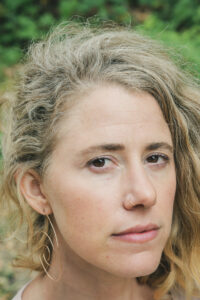 Rose Rothfeder
Rose Rothfeder
Rose Rothfeder (she/her) weaves her work in herbal medicine, movement, healing arts, regenerative culture, re-wilding, and more. She completed her coursework in herbalism at the California School of Herbal Studies, and currently offers herbal consultations, classes, and custom medicine formulas. Rose is an eternal student of Life, movement artist, lover of the Wild, and devotee of Water. She continues to deepen with the plant world, her ancestors, the Earth, and the many human and non-human relationships she tends.
//
Rose Rothfeder (ella / ella) entrelaza su trabajo en la medicina herbal, el movimiento, las artes curativas, la cultura regenerativa, la regeneración y más. Completó sus cursos de herboristería en la Escuela de Estudios de Hierbas de California y actualmente ofrece consultas, clases y fórmulas medicinales personalizadas a base de hierbas. Rose es una eterna estudiante de la vida, artista del movimiento, amante de lo salvaje y devota del agua. Continúa profundizando en el mundo vegetal, sus antepasados, la Tierra y las muchas relaciones humanas y no humanas a las que tiende.
 Lashon Daley
Lashon Daley
Lashon A. Daley is a PhD Candidate in Performance Studies at the University of California, Berkeley. As a scholar, dancer, storyteller, and creative artist, Lashon thrives on bridging communities together through movement and storytelling. She holds an MFA in Writing from Sarah Lawrence College (2008) and an MA in Folklore (2015) from UC Berkeley.
//
Lashon A. Daley es candidata a doctorado en Estudios de Performance en la Universidad de California, Berkeley. Como erudita, bailarina, narradora y artista creativa, Lashon prospera al unir comunidades a través del movimiento y la narración. Tiene una maestría en escritura de Sarah Lawrence College (2008) y una maestría en Folklore (2015) de UC Berkeley.
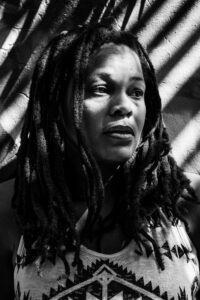 Cherie Hill
Cherie Hill
Cherie Hill (artistic director, IrieDance) is a creative artist who researches dance, transcendence, and how the body is a vessel for metaphysical presence. IrieDance pieces juxtapose alternative and cosmic existence with "real-life" experience to provide insight into the causes and rationalities of the universe's time and space continuum.
//
Cherie Hill (directora artística, IrieDance) es una artista creativa que investiga la danza, la trascendencia y cómo el cuerpo es un recipiente para la presencia metafísica. Las piezas de IrieDance yuxtaponen la existencia alternativa y cósmica con la experiencia de la "vida real" para proporcionar una idea de las causas y racionalidades del continuo de tiempo y espacio del universo.
 Andreina Maldonado
Andreina Maldonado
Andreina Maldonado (she/her) is a Venezuelan performing artist, cultural worker, and social justice advocate based in Yelamu- Unceded Ohlone Territory, now known as San Francisco, California. Her body of work includes collaborative performances with CherieHill Irie Dance, Rulan Tangen’s Dancing Earth contemporary Creations, Liz Boubion’s Piñata Dance Collective and full-length solo work such as Earth Mother (2018) and Remembrance of a Memory (2019). Andreina is inspired by dance theater, improvisational structures, modern and traditional dance, and singing / song-writing. Other sources of inspiration arise from ecofeminism, the female body, animals, and nature thus creating ever-unfolding experiences and imageries of parallel universes, expansion, energy, and potentiality.
//
Andreina Maldonado (ella) es una artista escénica Venezolana, trabajadora cultural y defensora de la justicia social que vive en Yelamu, el territorio no cedido del pueblo Ohlone, ahora conocido como San Francisco, California. Su trabajo incluye actuaciones colaborativas con CherieHill Irie Dance, Dancing Earth Contemporary Creations de Rulan Tangen, Piñata Dance Collective de Liz Boubion y trabajos en solitario de larga duración como Earth Mother (2018) y Remembrance of a Memory (2019). Andreina se inspira en el teatro de danza, las estructuras de improvisación, la danza moderna y tradicional y el canto / escritura de canciones. Otras fuentes de inspiración surgen del ecofeminismo, el cuerpo femenino, los animales y la naturaleza, creando así experiencias e imágenes en constante desarrollo de universos paralelos, expansión, energía y potencialidad.
The Earth Echoes Virtual Project series is supported through a community partnership with the David Brower Center, with funding from the Dancers’ Group’s CA$H Dance grant program.

